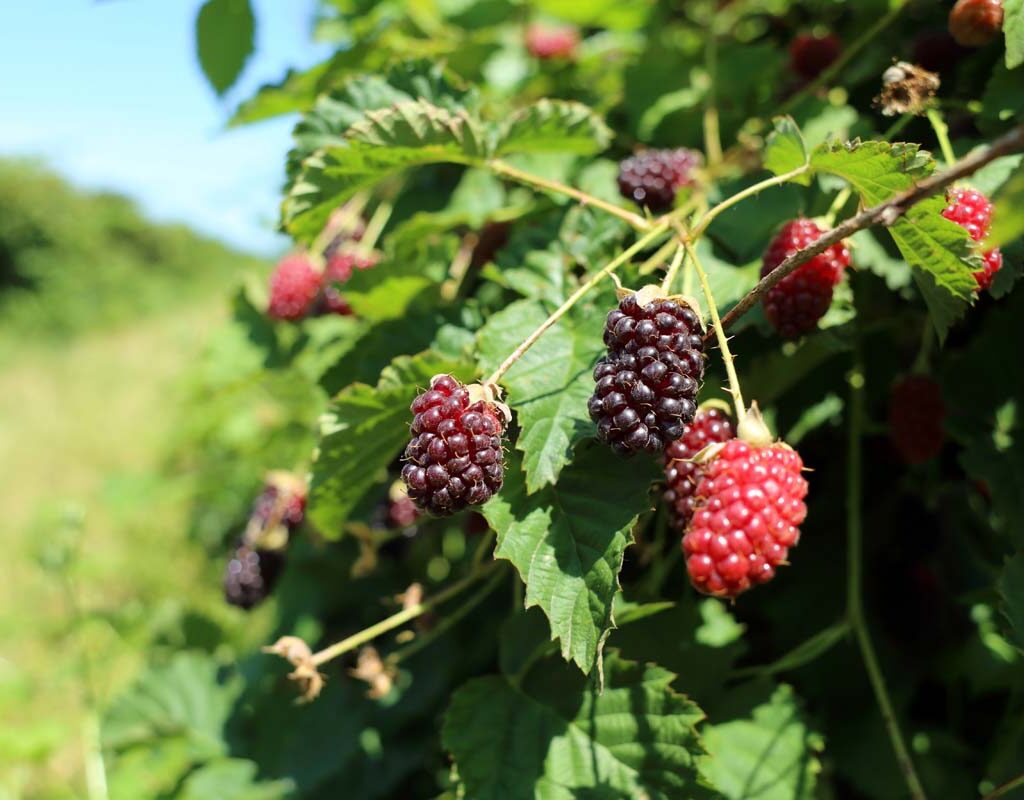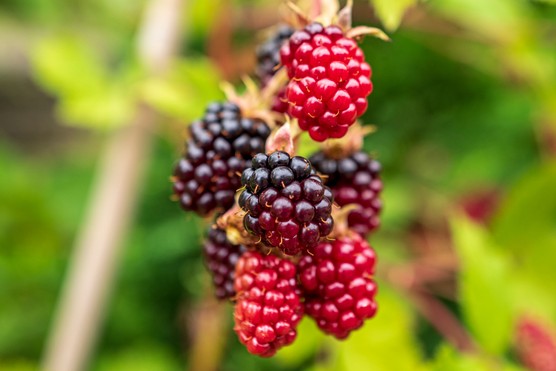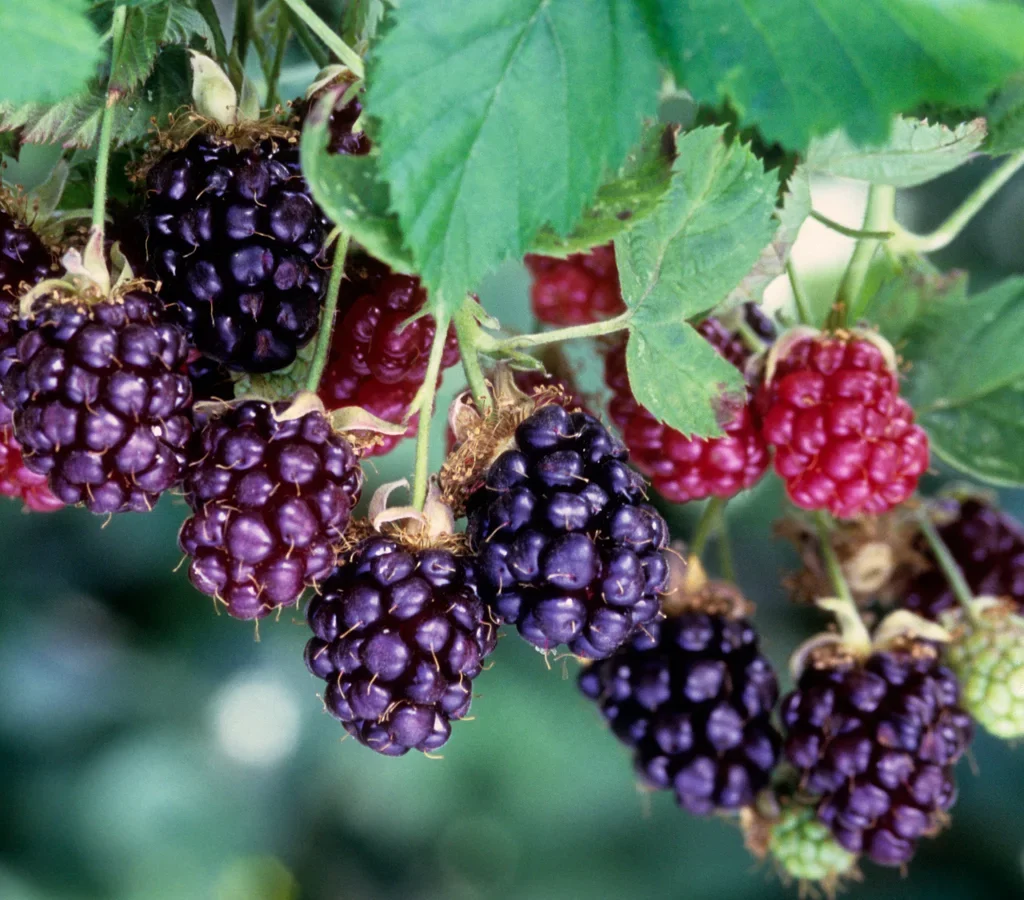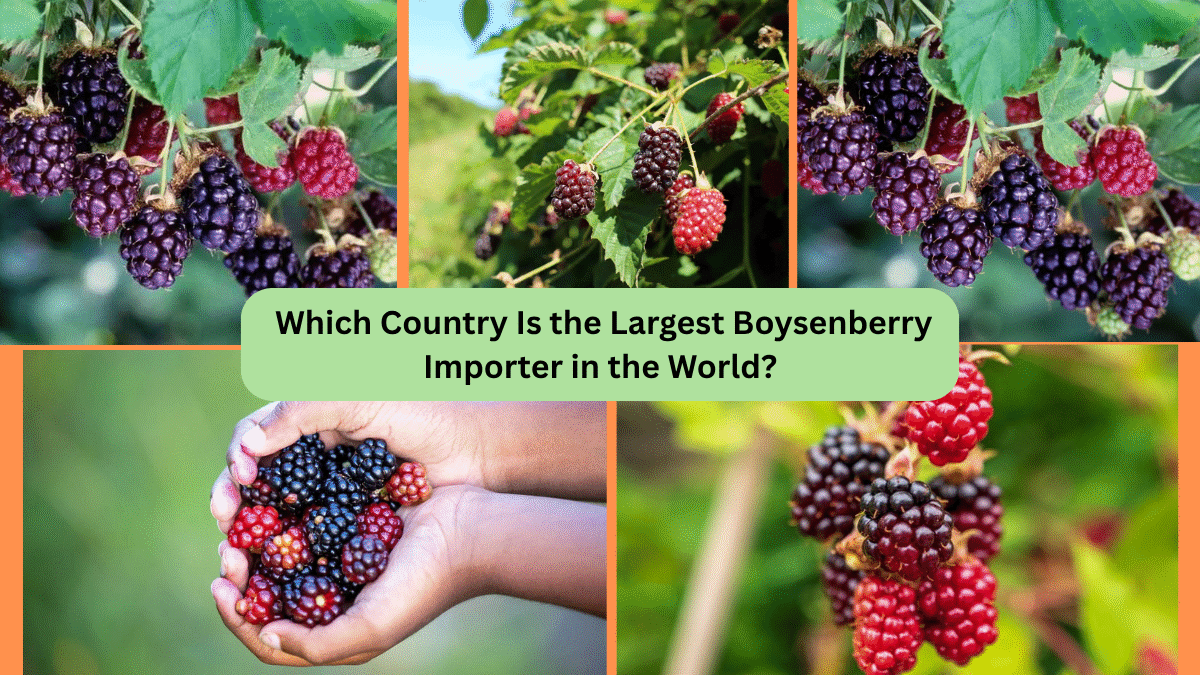Boysenberries, known for their rich, sweet-tart flavor and striking deep maroon hue, have quietly secured a place in global fruit trade, prized by chefs, bakers, and health-conscious consumers alike. While lesser-known compared to blueberries or raspberries, this blackberry-raspberry hybrid has carved out a niche market in both fresh and processed form. As worldwide demand grows for antioxidant-rich, versatile berries, so does international trade — but which country leads as the largest boysenberry importer in the world?
Let’s explore the fascinating world of boysenberry trade, the countries driving this market, and the trends shaping future demand.
What Is a Boysenberry?

A boysenberry is a hybrid fruit developed in the 1920s in California by farmer Rudolph Boysen. It’s a cross between a blackberry, raspberry, and loganberry — resulting in a large, juicy berry with a deep wine-red to purple hue and a sweet-tangy flavor profile.
- Flavor: A unique balance of sweetness and tartness.
- Uses: Pies, jams, syrups, sauces, beverages, desserts, and health supplements.
- Nutritional Benefits: Rich in vitamin C, dietary fiber, anthocyanins (antioxidants), and minerals.
Despite their delicate nature and short shelf life, boysenberries are highly valued in both fresh and processed forms in niche international markets.
Global Boysenberry Production & Trade Overview
Though once widely grown in California, commercial boysenberry cultivation has shifted primarily to New Zealand, Chile, United States, and Oregon due to changing climates and agricultural focus. Global production remains relatively limited compared to other berries, making boysenberries a specialty export product.
- Top Producers: New Zealand, Chile, United States, Mexico
- Main Export Markets: China, United States, Germany, France, Canada
Fresh, frozen, and pureed boysenberries are now widely traded, with frozen berries and concentrates especially in demand for industrial and food service applications.
Which Country Is the Largest Boysenberry Importer?

Based on the latest global agricultural trade data and industry reports, China stands as the largest boysenberry importer in the world.
China’s Dominance in the Market
In recent years, China’s appetite for imported berries, especially premium and health-benefiting varieties like boysenberries, has surged dramatically. Factors contributing to this trend include:
- Growing middle-class consumer base with a preference for imported, exotic, and health-oriented foods.
- Health and wellness trends driving interest in superfruits rich in antioxidants.
- Rapid expansion of cold-chain logistics infrastructure, enabling the safe transportation and storage of delicate fresh and frozen berries.
- Food industry innovation, with boysenberries appearing in desserts, beverages, sauces, and functional food products.
In 2023, China imported an estimated 1,500–1,700 metric tons of boysenberries, both fresh and frozen, making it the top global importer by volume and value.
Why Is China the Leading Boysenberry Importer?
- Health-Conscious Consumer Demand: Chinese consumers increasingly seek fruits rich in antioxidants, vitamins, and fiber. Boysenberries, loaded with anthocyanins and vitamin C, meet this demand.
- Culinary and Industrial Use: The food processing industry in China integrates boysenberries into a growing number of health products, artisan jams, yogurt flavors, beverages, and desserts.
- Retail Expansion: Major supermarket chains and e-commerce platforms like JD.com, Tmall, and Hema Fresh now offer imported berries year-round, increasing accessibility.
- Trade Partnerships: Strong sourcing relationships with boysenberry producers in New Zealand, Chile, and the United States ensure steady supply during various seasons.
- Cold-Chain Distribution: Improvements in logistics infrastructure make it possible to import and distribute fragile fruits like boysenberries efficiently across China’s vast urban centers.
Other Leading Boysenberry Importers

While China leads, several other nations also import boysenberries in notable quantities:
| Country | Estimated Annual Imports (2023) | Key Uses |
|---|---|---|
| United States | ~1,100–1,300 metric tons | Food processing, gourmet baking, fresh markets |
| Germany | ~700 metric tons | Preserves, desserts, organic markets |
| France | ~600 metric tons | Pastry shops, artisanal desserts, liqueurs |
| Canada | ~500 metric tons | Health food products, jams, foodservice |
| Japan | ~400 metric tons | Confectionery, bakery fillings, specialty stores |
The United States, despite being both a producer and exporter, still relies on imports for out-of-season or specialty demand, especially in the frozen and processed segments.
Where Are Boysenberries Grown for Export?
Top boysenberry-exporting countries include:
- New Zealand: Known for premium-quality, organically grown frozen boysenberries. A major supplier to China, Japan, and the United States.
- Chile: Exports large volumes of frozen boysenberries to China, Europe, and the U.S., leveraging its opposite-season harvest.
- United States: Primarily grown in Oregon and California, both for domestic consumption and limited exports.
- Mexico: Emerging supplier for North American markets.
Boysenberry Market Trends & Growth Drivers

The global boysenberry market is expected to continue growing, driven by:
- Increasing demand for health foods: As superfruits like blueberries and acai gain popularity, lesser-known berries like boysenberries are gaining recognition for their antioxidant content.
- Growth in functional foods and beverages: Boysenberries are being used in health drinks, supplements, and functional snack products.
- Rising organic and clean-label trends: Organic frozen boysenberries and purees are sought after in premium and health-conscious markets.
- Expansion of e-commerce grocery platforms: Online platforms are offering fresh and frozen berries directly to consumers, increasing their year-round availability.
Challenges in Boysenberry Trade
Despite positive trends, the boysenberry trade faces several challenges:
- Short harvest season: Boysenberries have a limited growing season and short shelf life, complicating year-round fresh supply.
- Delicate nature: Highly perishable and prone to damage during transport without advanced cold-chain logistics.
- Limited production areas: Global cultivation remains relatively small, making it susceptible to weather-related disruptions.
- Higher price point: As a specialty berry, boysenberries are more expensive than common berries, limiting mass-market penetration.
Future Outlook

The future of global boysenberry trade looks promising, with continued growth expected in:
- China: Maintaining its position as the largest importer, driven by increasing demand for functional and health-enhancing fruits.
- North America: Expanding frozen and processed product demand, especially for health drinks, organic products, and gourmet foods.
- Europe: Rising interest in premium, organic, and artisan berry products.
Advancements in cold-chain technology, logistics, and digital grocery retail will further expand the reach of this flavorful berry worldwide.
Conclusion
To summarize:
China is currently the largest importer of boysenberries in the world, fueled by its booming middle-class market, health-conscious consumers, culinary innovation, and expanding food retail landscape. Other nations like the United States, Germany, France, and Canada also maintain significant import levels, particularly for frozen and processed applications.
As global consumers increasingly prioritize health, wellness, and unique flavors, the demand for boysenberries—both fresh and frozen—is set to grow steadily. Though niche compared to other berries, boysenberries are poised to become a sought-after superfruit on tables and in product lines worldwide.






Leave A Comment